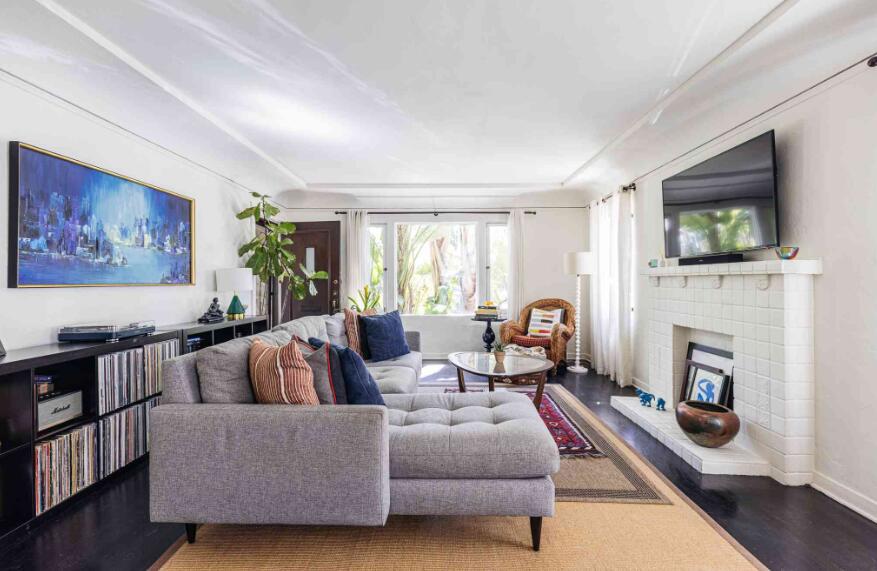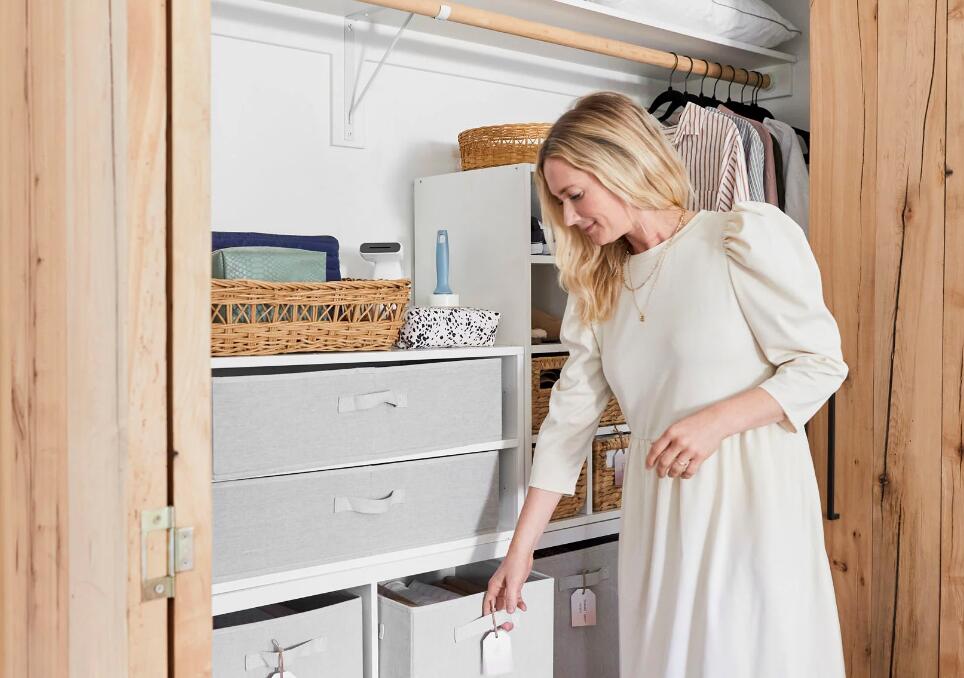In today’s fast-paced world, small living spaces have become increasingly popular. With urbanization and changing lifestyles, many individuals are opting for compact apartments or tiny houses. However, organizing a small living space can present unique challenges. The key to making the most of these limited spaces lies in efficient organization, which maximizes comfort, functionality, and aesthetic appeal. In this article, we will explore effective strategies and tips to help you organize your small living space and create a harmonious environment that meets your needs.
Assessing Your Small Living Space
Before embarking on any organizational project, it is crucial to assess your small living space thoroughly. Understanding the layout, available storage options, and limitations of the area will guide your organization efforts. Here are some key steps to consider:
1. Measure and Analyze the Space
Begin by measuring the dimensions of your living space, including the floor area, ceiling height, and any alcoves or nooks. This information will help you determine the potential storage solutions that can fit into the space. Take note of any unused or underutilized areas, such as empty corners or awkward spaces, that could be repurposed for storage.
2. Decluttering as a First Step
Start your organization journey by decluttering your space. Small living spaces can quickly become overwhelmed by excess belongings, making the area appear even smaller. Sort through your possessions and identify items you no longer need or use. Consider donating, selling, or recycling these items to create a more streamlined living environment.
3. Effective Storage Solutions
Once you have assessed your space and decluttered, it’s time to explore smart storage solutions that maximize the available area. Consider the following options:
a. Utilize Vertical Space
Vertical space is often underutilized in small living spaces. Install wall shelves or invest in floor-to-ceiling cabinets to make the most of this valuable area. Vertical storage not only provides additional space but also draws the eye upward, creating an illusion of height and openness.
b. Multifunctional Furniture
Invest in furniture pieces that serve multiple purposes. Ottomans with hidden storage, beds with built-in drawers, and coffee tables with shelves or compartments are excellent examples. Choosing furniture that doubles as storage helps reduce clutter and maximizes functionality.
c. Modular Storage Systems
Modular storage systems are ideal for small living spaces as they can be customized to fit your specific needs. These systems often include cubbies, shelves, and drawers that can be arranged in various configurations. Opt for versatile modular units that can be easily rearranged as your storage requirements change.
By assessing your small living space, decluttering, and incorporating effective storage solutions, you can lay the foundation for an efficiently organized environment that maximizes both space and functionality.
Furniture Placement and Space Optimization
Strategically arranging furniture and optimizing the use of space are essential in small living areas. By following these tips, you can make the most of your limited floor space:
1. Maximize Open Floor Space
One of the keys to creating a spacious and uncluttered feel in a small living space is to maximize open floor space. Consider the following:
– Place larger furniture pieces against walls to create a sense of openness in the center of the room.
– Use furniture with exposed legs, such as sofas and chairs, to visually open up the floor and create an airy atmosphere.
– Avoid blocking natural pathways or obstructing windows, as this can make the space feel cramped.
2. Choose Furniture with a Small Footprint
When selecting furniture, opt for pieces that are proportionate to the size of your living space. Look for items with a small footprint, such as narrow console tables or armless chairs, that will take up less floor space. Additionally, consider furniture that can serve dual purposes, such as a dining table that can also be used as a desk.
3. Incorporate Versatile Pieces
In a small living space, versatility is key. Furniture that can serve multiple functions will help you make the most of your limited square footage. For example:
– Use a folding table that can be tucked away when not in use, saving valuable space.
– Consider a daybed or sofa bed that can double as a guest sleeping area.
– Invest in a storage ottoman that can be used as a seat, footrest, and hidden storage solution.
By thoughtfully placing furniture and choosing versatile pieces, you can optimize your small living space and create a layout that maximizes functionality without sacrificing comfort.
Clever Organization Hacks
In addition to smart storage solutions and furniture placement, there are several clever organization hacks that can further enhance the efficiency and functionality of your small living space:
1. Utilize Unconventional Spaces
Think creatively when it comes to utilizing every inch of your small living space. Unconventional areas can offer valuable storage opportunities:
– Under the Bed: Invest in bed risers or opt for a bed with built-in storage drawers to utilize the often-unused space beneath your bed.
– Stairs: If your living space has stairs, consider using the space underneath as a storage area. Install drawers or shelves to stash items like shoes, books, or decorative baskets.
– Walls and Doors: Install hooks, hanging storage pockets, or shelves on walls and doors to store items like coats, bags, shoes, or toiletries.
2. Optimize Small Containers Within Cabinets and Drawers
Small containers can be a game-changer in organizing items within cabinets and drawers. Consider using small bins, baskets, or dividers to group and separate items like utensils, spices, or toiletries. This will help maximize space, keep things organized, and make items easily accessible.
3. Clever Labeling and Color-Coding
Labeling and color-coding can significantly improve the organization and access to belongings, especially in small living spaces where items may be stored in multiple containers or compartments:
– Label containers, bins, and shelves to easily identify and locate specific items.
– Color code items based on categories or frequency of use. For example, use different colored folders for different types of documents or assign a specific color for frequently used kitchen utensils.
4. Embrace Clear Storage Options
Utilize clear storage containers, bins, or boxes to hold and organize items within cabinets and shelves. Clear containers allow for easy visibility of their contents, eliminating the need to rummage through multiple containers to find what you need.
By employing these clever organization hacks, you can further optimize your small living space and make the most of every nook and cranny.
Maximizing Natural Light and Visual Appeal
In small living spaces, the right lighting and visual aesthetics can make a significant difference in creating an open and welcoming atmosphere. Here are some tips to maximize natural light and enhance the visual appeal:
1. Choose Light Colors
Opt for light-colored paint on walls and ceilings to create the illusion of a larger space. Light and neutral tones reflect more natural light, making the room appear brighter and more spacious. Additionally, consider using a monochromatic color scheme for a cohesive and visually pleasing look.
2. Use Mirrors to Reflect Light
Strategically placed mirrors can work wonders in small living spaces. They not only create the illusion of a larger area but also help in reflecting natural light throughout the space. Position mirrors opposite windows or in areas where they can bounce light around the room.
3. Avoid Heavy Curtains or Blinds
To maximize natural light, choose window treatments that allow for ample light penetration. Avoid heavy curtains or blinds that block light. Instead, opt for sheer curtains, blinds, or shades that provide privacy while still allowing sunlight to filter through.
4. Use Light Fixtures Strategically
Proper lighting can greatly enhance the ambiance of a small living space. Consider these tips:
– Utilize a combination of overhead lighting, task lighting, and accent lighting to create a layered and well-lit environment.
– Use adjustable or wall-mounted fixtures to free up valuable floor and surface space.
– Incorporate energy-efficient LED bulbs to provide bright, warm lighting while minimizing energy consumption.
By maximizing natural light and incorporating appealing lighting fixtures, you can create a visually appealing and well-illuminated small living space.
Conclusion
Organizing a small living space requires careful consideration, creativity, and a strategic approach. By assessing your space, decluttering, and incorporating effective storage solutions, you can maximize every square inch of your small living area.
In addition to smart storage solutions, optimizing furniture placement and utilizing versatile pieces can help you create a functional and comfortable living space. Clever organization hacks, such as utilizing unconventional spaces and implementing labeling techniques, further enhance efficiency and accessibility.
Maximizing natural light and incorporating visual appeal through color choices, mirrors, and strategic lighting can make your small living space feel larger and more inviting.
Remember, the key is to be creative, utilize all available space wisely, and keep functionality and aesthetics in mind throughout the process. With careful planning and implementation, you can create an organized and enjoyable environment in your small living space.


